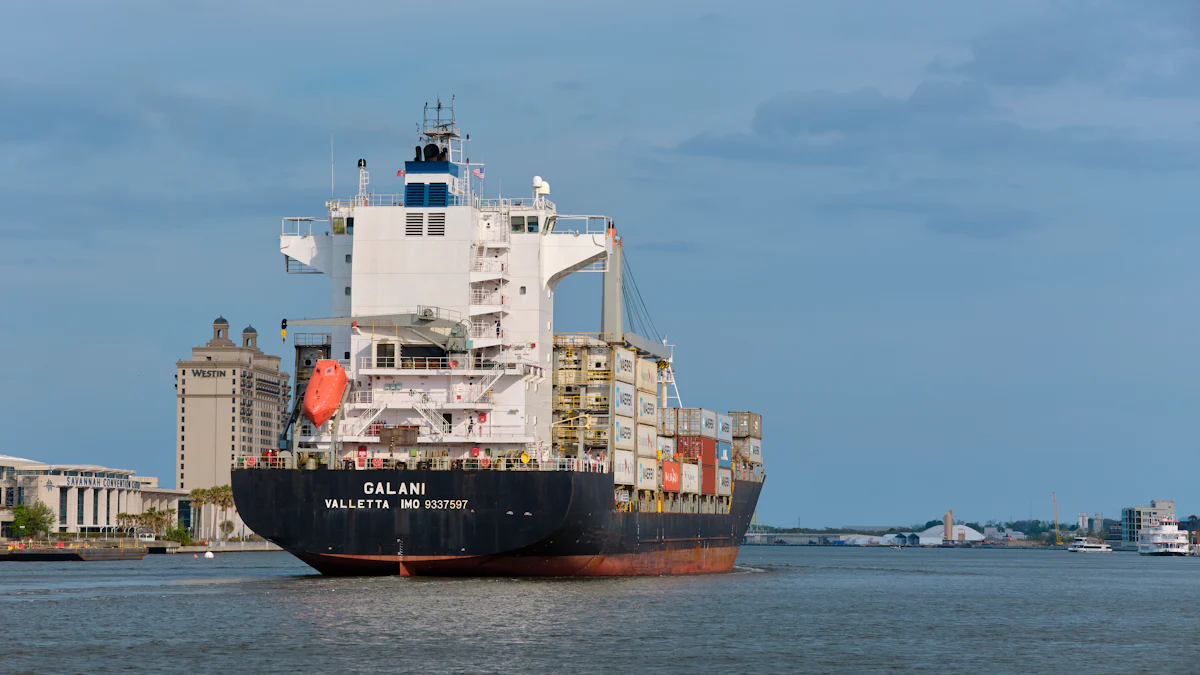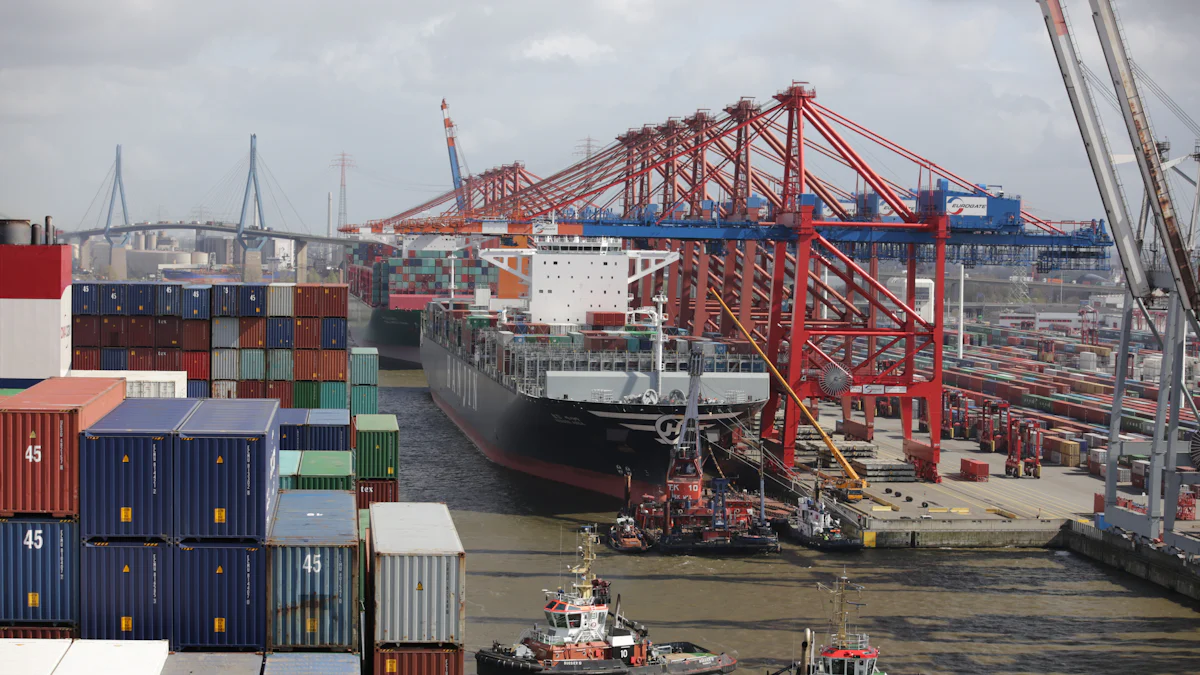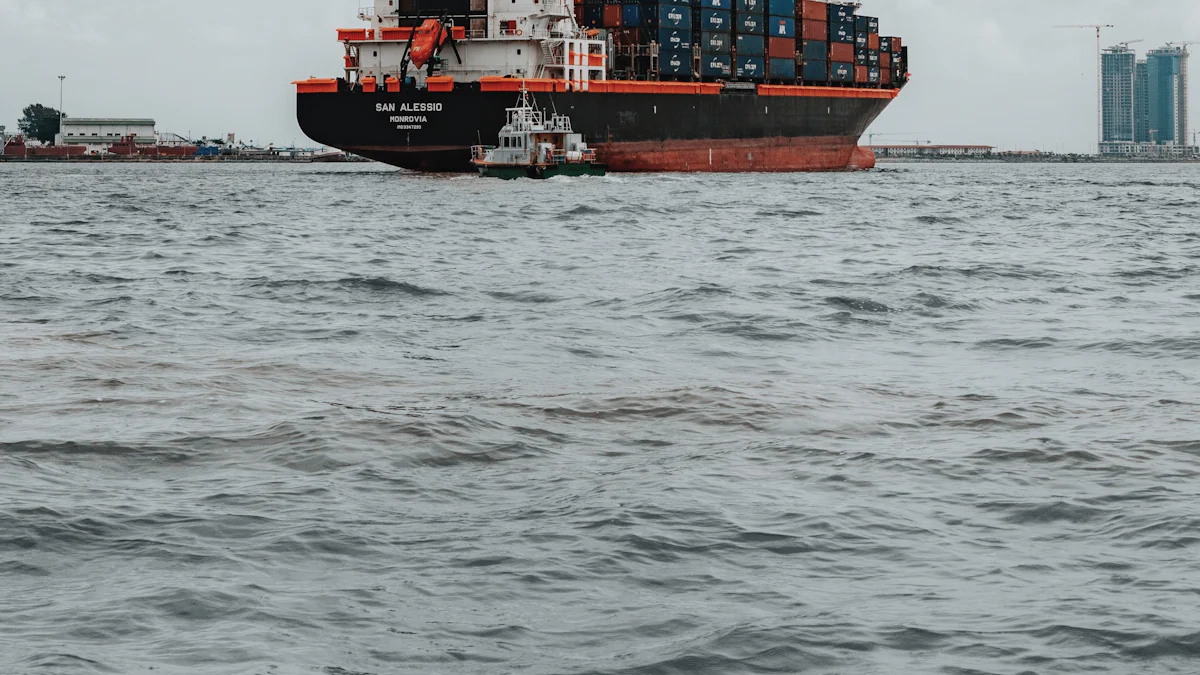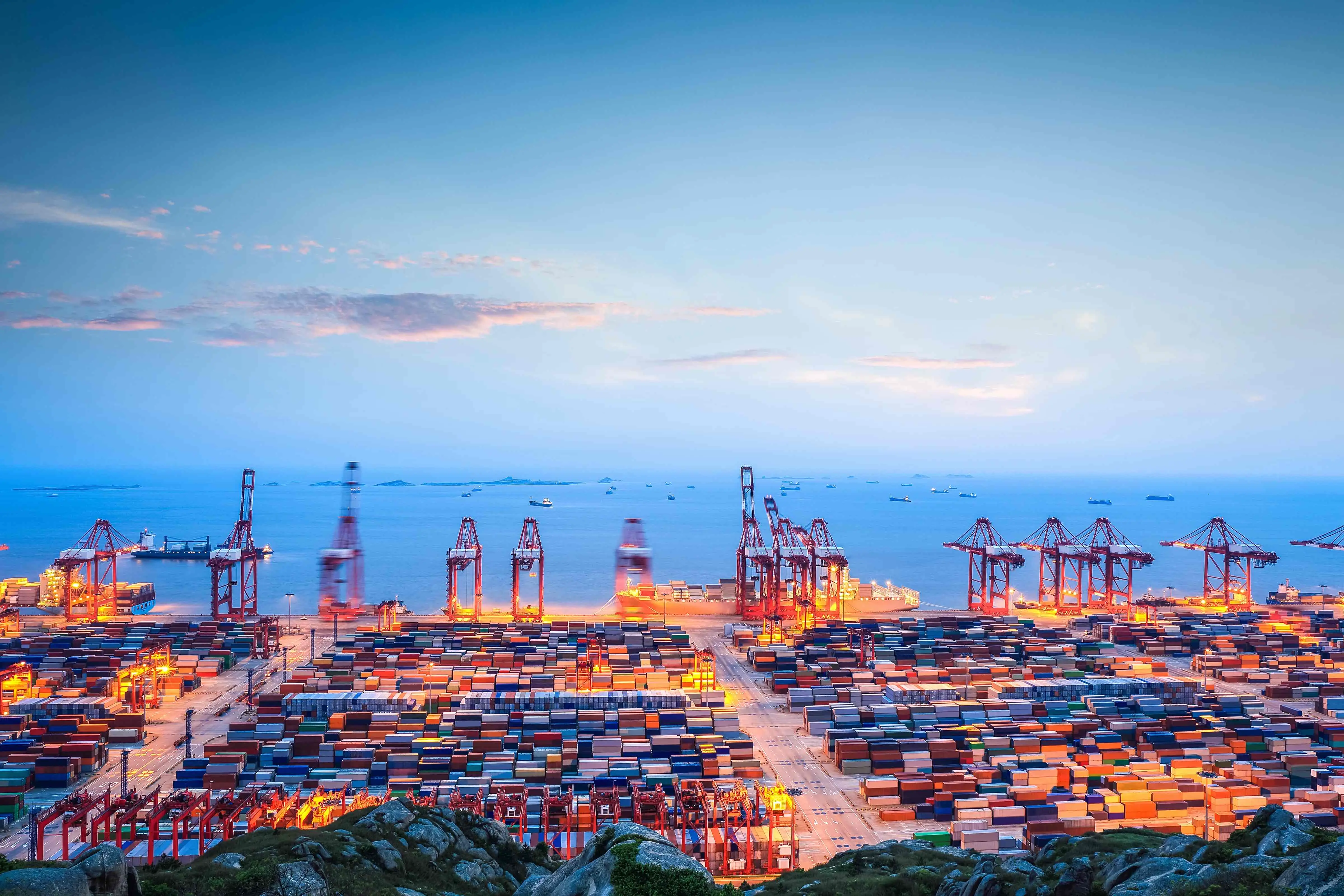How Ocean Freight Transit Time Impacts Your Supply Chain

Ocean freight transit time plays a crucial role in your supply chain. Delays can disrupt inventory flow and increase costs. Common causes include port congestion, severe weather, and extended customs checks. High demand during peak seasons often creates bottlenecks. Proactively managing transit time ensures smooth operations and strengthens customer relationships.
Key Takeaways
Understanding the factors affecting ocean freight transit time, such as port congestion and weather conditions, allows for better planning and management of your supply chain.
Utilizing technology like real-time tracking and predictive analytics can significantly enhance visibility and efficiency, helping to mitigate delays and control costs.
Proactive planning and flexibility in logistics strategies are essential for navigating challenges, ensuring timely deliveries, and maintaining customer satisfaction.
Understanding Ocean Freight Transit Time

Definition and Key Components
Ocean freight transit time refers to the duration it takes for goods to travel from the origin port to the destination port via sea freight. This time frame includes several key components:
Geographical Distance and Port Locations: The distance between ports and their accessibility significantly affect shipping transit time.
Carrier Schedules and Reliability: The frequency and punctuality of carrier services play a crucial role in determining transit time.
Seasonal Variations and Weather Conditions: Peak seasons and adverse weather can disrupt schedules.
Impact of Legislation on Carbon Intensity and Ship Speed: Regulations aimed at reducing emissions may limit vessel speeds, extending transit times.
Port Clearance Procedures: The efficiency of customs and port operations influences how quickly goods are processed.
Container Load Types: Full Container Load (FCL) shipments often move faster than Less than Container Load (LCL) shipments due to fewer handling requirements.
Port-to-port transit time is calculated by considering the vessel's speed, the route, and potential delays. Accurate transit time data helps you plan supply chain lead times effectively.
Factors Influencing Transit Time
Several factors impact ocean freight transit time, making it essential to account for them when planning shipments:
Weather conditions, such as hurricanes, can delay vessels.
Port congestion slows down docking and unloading processes.
Geographical distance determines the overall shipping duration.
Carrier schedules influence the availability of timely services.
Customs clearance procedures vary by region and can create bottlenecks.
Understanding these factors allows you to set realistic expectations for estimated transit times and avoid disruptions in your supply chain.
Common Challenges in Ocean Freight Transit
Ocean freight faces several challenges that can disrupt supply chain operations:
Port Congestion: Busy ports often lead to delays in loading and unloading cargo.
Customs Clearance Issues: Regulatory differences across regions can slow down shipments.
Weather Conditions: Severe weather events can halt sea freight operations entirely.
Operational Efficiency of Carriers: Inefficient carriers may cause unexpected delays.
Geopolitical Factors: Shipping through unstable regions introduces risks of delays and disruptions.
These challenges highlight the importance of proactive planning and leveraging technology to optimize transit time and maintain supply chain efficiency.
The Impact of Ocean Freight Transit Time on Supply Chains

Effects on Inventory Management and Stock Levels
Ocean freight transit time directly affects how you manage inventory and maintain stock levels. Longer shipping transit time can lead to higher storage costs, increased insurance expenses, and logistical challenges. You rely on accurate transit time data to plan inventory levels effectively. Without it, you risk overstocking goods or running out of stock entirely.
Delays in sea freight disrupt inventory turnover rates, making it harder to meet customer demand.
Precise transit time estimates help you avoid unnecessary stockpiling, which ties up capital and increases warehousing costs.
Efficient planning ensures your supply chain lead times remain predictable, reducing the risk of stockouts.
By understanding how ocean transit time impacts inventory, you can better align your supply chain with customer needs.
Cost Implications of Delays and Inefficiencies
Delays in ocean freight often result in higher operational costs. When port congestion or outdated infrastructure slows down shipments, you face increased expenses.
Carriers pass on additional fuel and operating costs to you through higher rates and surcharges.
Geopolitical events and rerouting can add weeks to average transit time, further inflating shipping expenses.
Inefficient container handling and customs delays contribute to rising costs, impacting your bottom line.
Minimizing inefficiencies in sea freight operations helps you control costs and maintain profitability.
Customer Satisfaction and Delivery Reliability
Your customers expect timely deliveries. Delays in ocean freight transit time can damage your brand reputation and lead to customer dissatisfaction.
Missed delivery deadlines frustrate customers and erode trust in your business.
Unmet expectations may cause customers to switch to competitors, reducing retention rates.
Reliable sea freight operations ensure you meet delivery commitments, enhancing customer loyalty.
By prioritizing accurate transit time estimates, you can build stronger relationships with your customers and protect your brand image.
Strategies to Optimize Ocean Freight Transit Time with JUSDA
Leveraging JUSDA’s Supply Chain Management Collaboration Platform
JUSDA’s Supply Chain Management Collaboration Platform offers advanced tools to streamline your sea freight operations. The platform integrates technologies like IoT, AI, and blockchain to provide real-time visibility across your supply chain. You can track shipments, monitor customs clearance, and coordinate with carriers seamlessly. This transparency helps you anticipate potential delays and adjust your logistics strategies proactively. By using predictive analytics, the platform enables you to make reliable transit time predictions, reducing risks and improving efficiency.
With JUSDA, you gain access to demand forecasting tools that align production schedules with shipping transit time. This synchronization minimizes inventory costs and ensures timely deliveries. The platform’s ability to consolidate data from multiple systems enhances decision-making and keeps your supply chain agile.
Choosing Optimal Routes, Vessels, and Ports
Selecting the right shipping routes and vessels is essential for reducing transit time. JUSDA helps you evaluate multiple routes to avoid congested ports and unnecessary stops. You can choose vessels that visit fewer ports, ensuring faster delivery. For urgent shipments, JUSDA offers expedited shipping services to meet tight deadlines.
Planning alternative routes also prepares you for unexpected disruptions. Consulting with JUSDA’s supply chain experts ensures you make informed decisions about the best routes and ports for your shipments. This approach optimizes your sea freight operations and keeps your supply chain running smoothly.
Using Technology for Real-Time Visibility and Predictive Analytics
Technology plays a vital role in improving real-time visibility and operational efficiency. JUSDA’s platform uses IoT and data analytics to provide up-to-the-minute information on container locations. This visibility allows you to manage delays effectively and prevent costly issues. Predictive analytics analyzes historical data to forecast potential disruptions, enabling better planning.
Automation within the platform streamlines processes like customs clearance and inventory management. These features reduce manual errors and keep stakeholders informed. By leveraging technology, you can enhance transparency and ensure reliable transit time predictions for your shipments.
Building Flexibility and Contingency Plans
Flexibility is crucial for mitigating risks in ocean freight. JUSDA helps you build resilience by diversifying supplier and sourcing options. You can create year-round strategies that include alternative ports and routes. Conducting risk assessments with JUSDA’s tools allows you to identify potential disruptions and develop tailored contingency plans.
Proactively adjusting your logistics strategies ensures you navigate challenges like weather-related delays or port congestion effectively. With JUSDA’s support, you can maintain a steady flow of goods and protect your supply chain from unexpected disruptions.

JUSDA Solutions
To provide you with professional solutions and quotations.
Ocean freight transit time plays a vital role in your supply chain’s success. Managing it effectively ensures smoother operations and better customer satisfaction.
Key Takeaways for Optimization:
Choose the right transportation mode to balance speed and cost.
Avoid delays by selecting efficient routes and carriers.
Use technology like real-time tracking to improve visibility.
Proactive planning empowers you to prevent costly disruptions. Real-time tracking systems enhance transparency, helping you manage delays efficiently. By leveraging JUSDA’s intelligent platform, you can reduce risks, control costs, and deliver exceptional service.
FAQ
1. How can you calculate ocean freight transit time accurately?
You can calculate transit time by considering vessel speed, route distance, and potential delays like port congestion or weather disruptions. Tools like JUSDA’s platform simplify this process.
2. What steps can you take to avoid delays in ocean freight?
Choose efficient routes, work with reliable carriers, and use real-time tracking tools. JUSDA’s predictive analytics also help you anticipate and mitigate potential disruptions.
3. Why is real-time visibility important for ocean freight?
Real-time visibility helps you monitor shipments, address delays quickly, and maintain supply chain efficiency. JUSDA’s IoT-enabled platform ensures you stay informed at every stage.
See Also
Understanding Current Trends in Logistics Risk Management
Overcoming Global Supply Chain Growth Obstacles Effectively
Transforming Logistics Through Innovative Supply Chain Solutions
Assess Your Supply Chain Efficiency Today and Discover
Get Prepared: Unveiling New Transport Tech for Supply Chains
